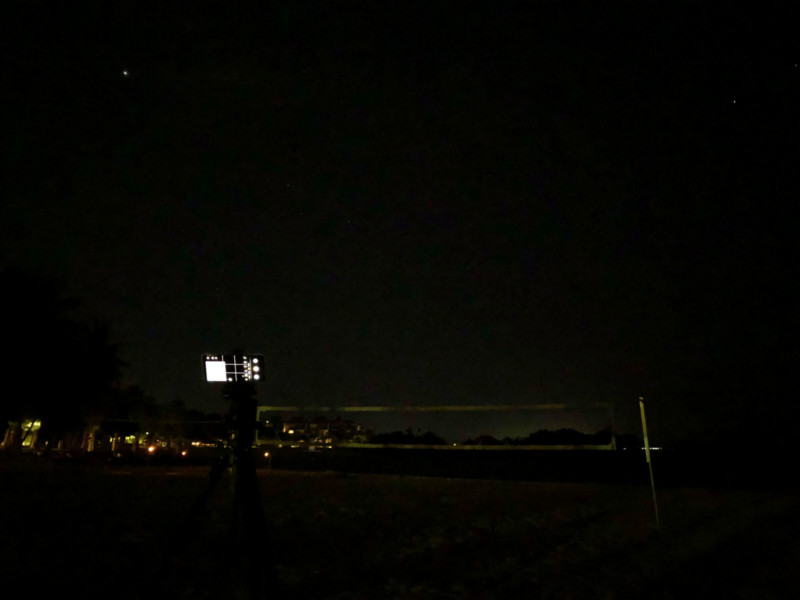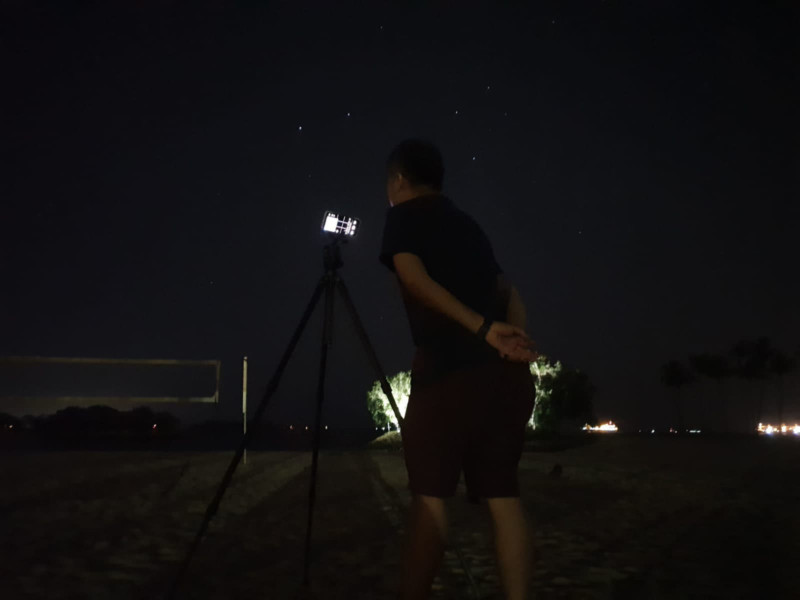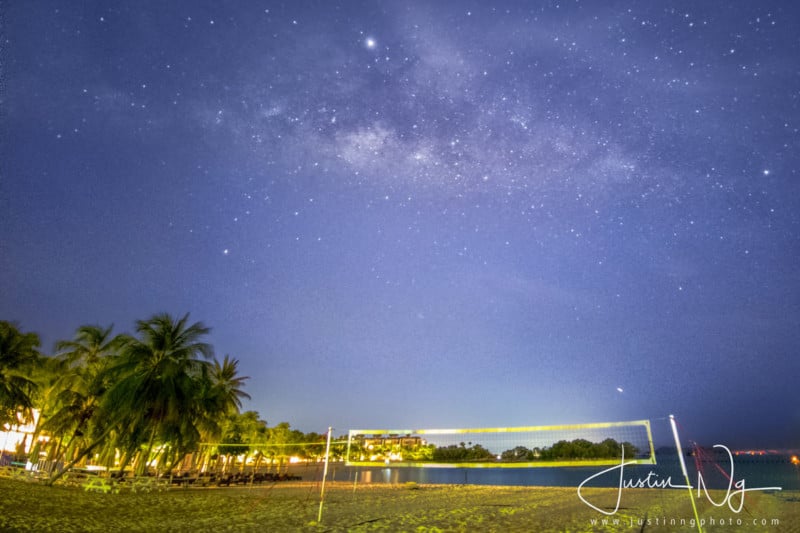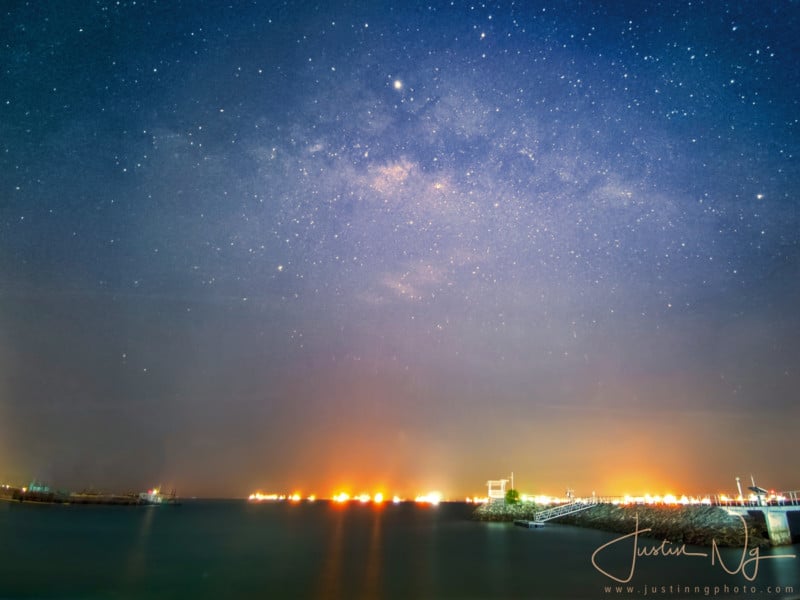Shooting the Stars in Light-Polluted Singapore with the Huawei P30 Pro
The moment I had been waiting for finally arrived exactly 49 days after I got my Huawei P30 Pro. This is one of my final tests for the phone after shooting the Milky Way handheld and a meter. So what’s the big deal about this test? Because photographing the Milky Way in Singapore with a DSLR was deemed impossible by many astrophotography veterans here just 5 years ago.
![]()
Challenge accepted.
It’s not surprising why many people didn’t think it’s possible. Singapore has a reputation for being the country with the highest light pollution in the world. The light pollution map below shows you the sky quality at Sentosa, the location where my test was performed.
![]()
The sky quality was class 9, and class 9 skies are the worst, with the entire sky brightly lit, even at the zenith, making the possibility of photographing the Milky Way here seem impossible. But not with the Huawei P30 Pro.
In case you’re wondering what class 1 or class 3 skies looks like (pun intended), you can see the behind-the-scenes image taken with my iPhone X and Samsung S9.


Both smartphones are equipped with the technology to make a brightly-lit location looks like a dark site. Okay, that’s enough joking — and by the way, I was an Apple fan for a decade and iPhone is still my main phone. I’m not affiliated with Huawei in any way.
Back to my story. I led a nighttime photography tour in Singapore on May 25th, and the sky condition was acceptable with some clouds. Seeing was not great, but I knew we could get something with a DSLR, so the workshop went ahead. I captured Milky Way photos with my Huawei P30 Pro as an added bonus.

The bright “star” above the Galactic center of the Milky Way is actually the planet Jupiter. It will be near to the Galactic center of the Milky Way for the rest of this year and the next time it appears this close to the Galactic center will be in 2031, about 12 years later. Next year and on, Jupiter will be located below the Galactic center. So, look out of your window now and see if you have a Milky Way view from your room.
Applying the exposing to the right (ETTR) technique with P30 Pro isn’t as straightforward as it seems because I can’t change the aperture value in Pro mode. So I’ve tried different settings and checked the histogram after each attempt before I eventually used the settings: f2.2, ISO 1600, and 25s. Then I processed the image using some techniques to unveil the elusive Milky Way. I’ve also forgotten to expose for the trees on the right, resulting in loss of details and so, I’ve cropped out the overexposed trees instead.
After I managed to shoot the Milky Way at Sentosa for the first time successfully using my Huawei P30 Pro, I was looking for another opportunity to make my second attempt and that opportunity came soon enough. I predicted the night sky was going to be clear on May 26th, and I captured this photo:

Conclusion: I’m so glad I bought Huawei P30 Pro before the Huawei ban. And with P30 Pro in my pocket, here’s what’s inside my camera bag:
![]()
About the author: Justin Ng is an award-winning photographer based in Singapore. The opinions expressed in this article are solely those of the author. His work has been published in publications such as BBC, CNN, National Geographic, Yahoo!, Space.com, EarthSky, and UniverseToday. You can find more of his work on his website, Facebook, Twitter, and Instagram. This article was also published here and here.